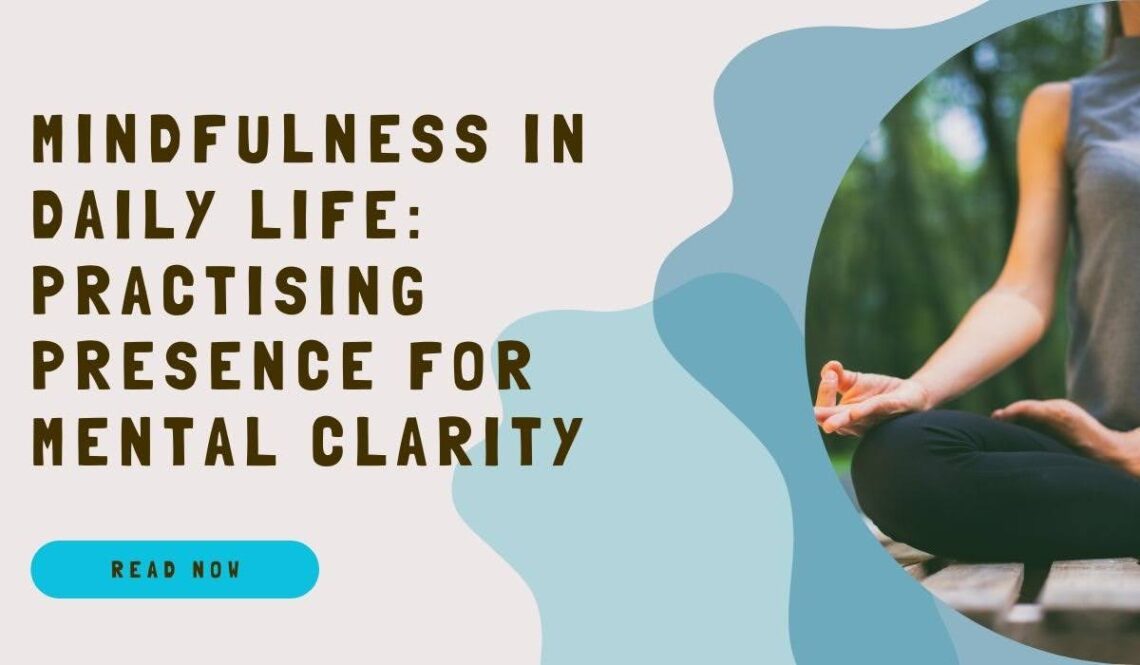
Mindfulness in Daily Life: Practising Presence for Mental Clarity
It’s easy to get caught up in the hustle and bustle of daily life. We’re constantly bombarded with distractions, from emails and social media notifications to work deadlines and family responsibilities. In the midst of all this busyness, it’s easy to lose touch with the present moment and become overwhelmed by stress and anxiety. However, by incorporating mindfulness into our daily lives, we can cultivate a greater sense of mental clarity and peace.
Mindfulness is the practice of paying attention to the present moment with openness, curiosity, and acceptance. It involves tuning into our thoughts, feelings, sensations, and surroundings without judgement or attachment. By bringing our awareness to the here and now, we can become more grounded and centred, allowing us to respond to life’s challenges with greater clarity and composure.
One of the simplest ways to incorporate mindfulness into daily life is through mindful breathing. Taking a few moments each day to focus on our breath can help calm the mind and relax the body. Simply find a comfortable position, close your eyes if you like, and bring your attention to the sensation of your breath as it enters and leaves your body. Notice the rise and fall of your chest or the feeling of air passing through your nostrils. Whenever your mind wanders, gently bring your focus back to your breath, without judgement or frustration.
Another way to practise mindfulness in daily life is through mindful eating. Instead of rushing through meals while multitasking or scrolling through your phone, take the time to savour each bite and appreciate the flavours, textures, and aromas of your food. Pay attention to the sensations of chewing and swallowing, and notice how your body feels before, during, and after eating. Eating mindfully not only enhances the enjoyment of your meals but also promotes healthier eating habits and greater awareness of hunger and fullness cues.
Mindfulness can also be incorporated into everyday activities such as walking, washing dishes, or even brushing your teeth. Instead of letting your mind wander or getting lost in thought, bring your awareness to the sensations and movements involved in each activity. Notice the feeling of your feet touching the ground as you walk, the sound of water running as you wash dishes, or the sensation of the toothbrush against your teeth and gums. By bringing mindfulness to these mundane tasks, you can transform them into opportunities for relaxation, presence, and self-awareness.
In addition to these informal practices, you can also set aside time for formal mindfulness meditation. This involves sitting quietly and bringing your attention to your breath, body, or a specific object of focus. Start with just a few minutes each day and gradually increase the duration as you become more comfortable with the practice. Meditation can help strengthen your mindfulness muscle and cultivate a greater sense of inner peace, clarity, and resilience over time.
Mindfulness is a simple yet powerful practice that can help us find mental clarity and peace in the midst of our busy lives. By bringing our attention to the present moment with openness and acceptance, we can cultivate greater awareness, resilience, and well-being. So the next time you find yourself feeling stressed or overwhelmed, take a moment to pause, breathe, and reconnect with the present moment – you may be surprised by the sense of calm and clarity that arises.



